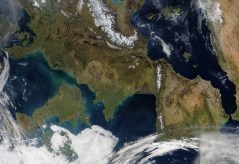The Hidden Dangers Faced by Sailors on the CV 59 USS Forrestal: A Deep Dive
The USS Forrestal (CV-59), the first of the supercarriers in the United States Navy, is renowned for its impressive size and capabilities. However, beneath its mighty exterior lies a harrowing history filled with danger and tragedy. This article delves into the hidden dangers faced by sailors aboard this iconic vessel, revealing chilling truths that many may not know.
The Tragic Fire of 1967
On July 29, 1967, a catastrophic fire broke out on the USS Forrestal while it was stationed off the coast of Vietnam. The incident tragically claimed the lives of 134 sailors and left over 300 injured, marking it as one of the deadliest events in U.S. naval history. The fire was ignited by a rocket accidentally launched during flight operations, leading to a chain reaction of explosions that engulfed parts of the ship in flames. This event not only highlighted serious safety protocols failures but also underscored how perilous life aboard an aircraft carrier could truly be.
Exposure to Hazardous Materials
Sailors on board CV-59 were frequently exposed to hazardous materials without adequate protection or training. Asbestos was widely used in ship construction for insulation purposes during its commissioning era. Unfortunately, decades later, many veterans have been diagnosed with asbestos-related diseases such as mesothelioma due to prolonged exposure while serving aboard. The impact of this exposure has led to ongoing health crises among former crew members who continue to fight for recognition and compensation for their illnesses.
Psychological Toll and Mental Health Challenges
Life at sea can be immensely challenging psychologically as well as physically; sailors on USS Forrestal faced long deployments away from home coupled with high-stress situations during combat operations in Vietnam. Reports indicate that depression and PTSD are prevalent among veterans who served on this ship due to witnessing traumatic events—including combat losses and catastrophic accidents like the infamous fire—without proper mental health resources available at that time.
Unsafe Working Conditions
The operational environment aboard an aircraft carrier is inherently dangerous; however, conditions onboard CV-59 were exacerbated by outdated equipment and insufficient safety protocols. Sailors often operated machinery without proper training or safety gear while working long hours under extreme conditions—especially during flight deck operations where split-second decisions could mean life or death. These unsafe working conditions contributed significantly to accidents resulting in injuries or fatalities over her operational lifetime.
Legacy and Ongoing Health Battles
As we reflect upon the legacy of CV-59 USS Forrestal, it’s crucial to remember not just her remarkable achievements but also the sacrifices made by her crew amid grave dangers they faced throughout their service years. Many former sailors continue battling health issues linked directly to their time served onboard—from physical ailments caused by hazardous materials exposure to psychological struggles stemming from traumatic experiences endured at sea—challenges that deserve attention and support even decades later.
In conclusion, while CV-59 USS Forrestal stands tall as a landmark achievement in naval engineering history, it serves as a stark reminder of both heroism and vulnerability inherent within military service at sea. Awareness about these hidden dangers can lead towards better support systems for our brave servicemen and women who face ongoing battles long after they’ve left active duty.
This text was generated using a large language model, and select text has been reviewed and moderated for purposes such as readability.






